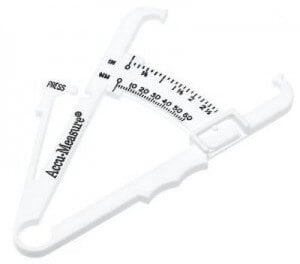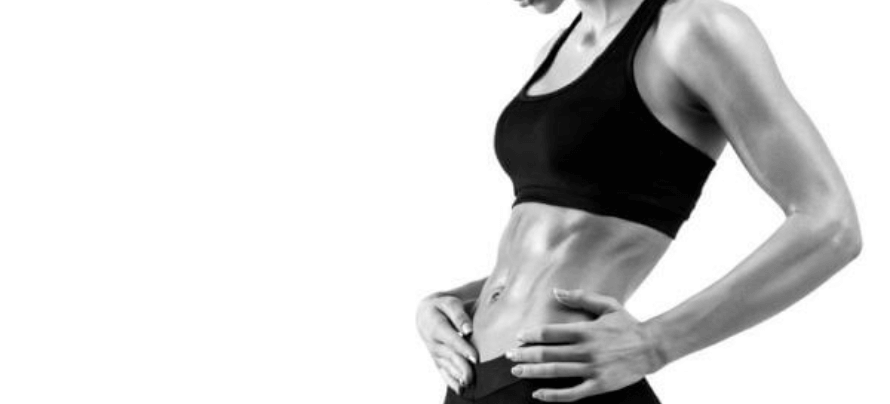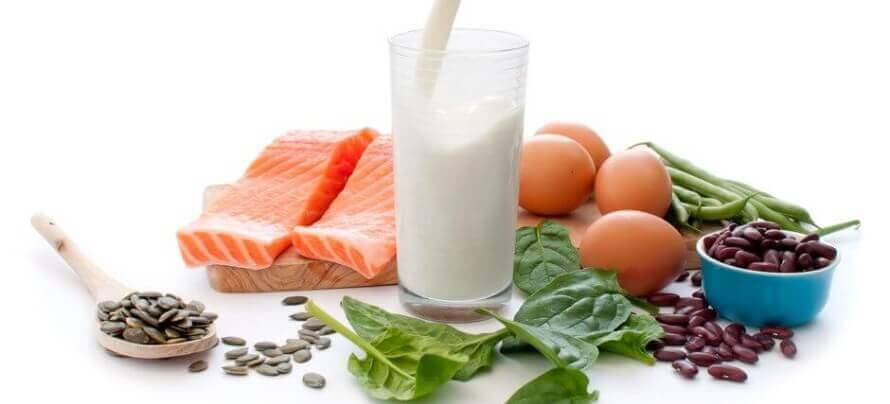Calculate your body fat percentage is an important factor to consider when looking at your overall health and fitness level. It’s also a key indicator of whether or not you’re losing weight effectively.
What is body fat percentage?
Body fat percentage refers to the amount of fat in your body compared with total weight, and it can be calculated by dividing your body mass index by 100. BMI is a ratio that compares how much you weigh relative to your height. It’s used as an indicator for health risks such as heart disease or diabetes. The higher your BMI, the more likely you are at risk for these diseases. A healthy range for men is 18-24; 25-29 indicates overweight; 30+ means obese. For women, the ranges are 19-25, 26-30, and 31+.
Body Fat is necessary to maintain life
Body fat percentage (BFP) is the total mass of fat divided by total body mass. There are 2 distinct body fat types: Essential body fat and storage body fat.
Essential body fat is necessary to maintain life and reproductive functions. The percentage of essential body fat for women is greater than that for men, due to the demands of childbearing and other hormonal functions.
The essential fat is 3–5% in men and 8–12% in women. The percentage of storage fat consists of fat accumulation in adipose tissue, part of which protects internal organs in the chest and abdomen. The minimum recommended total body fat percentage exceeds the essential fat percentage value reported above. A number of methods are available for determining body fat percentage, such as measurement with calipers or through ultrasound scanning.
How body fat percentage is calculated (BFP)?
To find out what your body fat percentage really is, use this formula:
BMI Weight/Height^2
Then divide your BMI by 22.5 to get your percent body fat. If you want to know if you have too much or not enough fat on your body, then check out our article about “What Is Healthy Body Fat Percentages?”
If you want to calculate your body fat percentage accurately, you need to use a reliable and accurate method.
Here are three methods that you can use to calculate your body fat percentages.
1) The Most Common Method: Calipers
Calipers measure the thickness of skin on various parts of your body. They do this by using two metal plates with small holes in them. One plate goes over each part of your body, while another plate measures how far apart they are from one another. This measurement will tell you what percent of total body mass it represents.
The problem with caliper measurements is that they don’t always give consistent results. For example, if you have huge arms compared to other areas of your body, your arm might be thicker than your leg. In addition, some people’s bodies change shape as their muscles grow stronger or weaker. These changes make it difficult to get accurate readings.
2) Bioelectrical Impedance Analysis : A More Reliable Way To Measure BODY FAT PERCENTAGE
The bio-impedance analysis uses electrical currents to determine the amount of water content inside your body. We can estimate the proportion of lean muscle tissue versus fat tissue within our bodies by measuring these currents.
This method has been shown to produce more accurate results than calipers because it doesn’t rely on assumptions about where certain parts of your body should fall relative to others. However, there are still limitations to its accuracy.
For example, bioimpedance does not work well for estimating subcutaneous fat levels. Also, it cannot distinguish between different types of fats, such as saturated vs. unsaturated fats.
3) DEXA Scanning – An Even Better Option!
DEXA scanning is considered the gold standard for determining body composition. It works by taking X-rays of your bones which allows us to see exactly how much bone matter there is in relation to soft tissues like muscle and organs.
It considers all kinds of factors, including height, age, gender, ethnicity, etc., so it gives exact estimates of body fat percentage.
However, DEXA scans aren’t cheap. You’ll typically pay around $100 per scan. That means that unless you’re planning on doing multiple tests throughout your life, it may not be worth investing in.
What method do I use to calculate my body fat percentage?
The best tool for calculating your body fat percentage is the Bioelectrical Impedance Analyzer. BIA measures electrical resistance through various areas of your body using electrodes attached to your skin. The device uses small electric currents to detect changes in those resistances. These measurements tell us what kind of fluid is contained within each area of your body:
water, blood cells, minerals, protein, etc.
BIA can accurately estimate total body fat content because it detects differences in tissue density. For instance, lean people tend to have lower amounts of fat than overweight individuals who carry more visceral fat.
Get accurate results from BIA
We must ensure that our bodies are hydrated enough to conduct electricity properly. To achieve optimal hydration, drink plenty of fluids before testing. It’s recommended that you consume about 2-3 liters of water daily.
To make sure you don’t dehydrate yourself too much, try drinking 1 liter of water for 30 minutes before taking the measurement. Also, avoid caffeine and alcohol as they both deplete electrolytes.
If you’ve been exercising recently, wait until you stop working out before measuring your body composition.
There really isn’t any clear winner here. Each method has advantages and disadvantages. If you plan on getting tested regularly, then I would recommend going with the most expensive option. But if you only intend to test once every few years, then go with the cheapest option.
In either case, remember that none of these options are perfect. So even though a particular method may seem better at first glance, it could actually end up being less reliable when used long term.
Can I use multiple methods to calculate my body fat percentage?
Yes! In fact, each method provides different insights into your body composition. The best thing to do is to combine them. For example:
Body Mass Index + Bioelectrical Impedance Analysis Total Body Water %
The BIA measures total body water which includes muscle mass and bone mineral content. By combining BMI and BIA, you get a more accurate estimate of your body fat percentage than using just one method alone.
What does “body fat” mean exactly?
Fat is made up of three main components: triglycerides, cholesterol, and phospholipids. Triglyceride molecules contain 3 fatty acids linked by glycerin. Cholesterol contains 4 fatty acids. Phospholipid molecules consist of two fatty acid chains connected by a phosphate group.
Triglycerides are stored primarily in adipose tissues such as subcutaneous fat, abdominal fat, breast fat, thigh fat, backfat, neck fat, face fat, etc. They also exist in high concentrations in the liver and muscles.
Cholesterol is found throughout all parts of the human body except for the brain and spinal cord. Most of this cholesterol exists in the form of HDL or LDL. There is some evidence suggesting that higher levels of good cholesterol correlate with increased longevity.
Phospholipids are present in cell membranes where they help maintain structural integrity. Some studies suggest an inverse relationship between dietary intake of saturated fats and cardiovascular disease risk factors like blood pressure and serum lipoproteins. However, other research suggests that people who eat diets rich in saturated fats have reduced risks of heart attacks and strokes compared to those eating low-saturated fat diets.
Why should I measure my body fat percentage?
Knowing your body fat percentage will help you understand where you stand when it comes to losing weight. You may also need to adjust your diet and exercise routine based on whether you’re underweight, normal weight, overfat or obese. If you want to lose weight, knowing your current level of obesity will allow you to set realistic goals. This way, you won’t feel overwhelmed by unrealistic expectations.
You may also find out that you have an eating disorder, diabetes, or heart disease. Knowing this information before starting a new fitness program will enable you to take steps towards improving your health.
It’s important to note that there are many factors involved in determining how healthy someone is. A person’s A overall person’s lifestyle genetics, habits lifestyle play choices, an environment, role age, gender, determining ethnicity, one’s physical risk activity of levels, developing sleep certain habits, diseases.
Can I just buy a scale from Amazon?
Yes, but they don’t always give accurate readings. We suggest getting one that measures both pounds and kilograms. That way, you won’t lose track of your progress. Also, make sure you read the instructions carefully before using them so you can avoid any mistakes.
Do I really need to count calories?
Calorie counting has been around since the early 1900s. It was originally used to treat patients suffering from malnutrition. The idea behind calorie counting is simple: if we know exactly what our bodies require to function properly, we can control our caloric intake accordingly.
For example, if we know that 1,000 calories per day are enough to sustain us, then we shouldn’t consume more than that amount. But most experts agree that calorie counting isn’t effective at helping overweight individuals achieve their desired results. In fact, it could actually be harmful because it encourages overeating.
Does measuring my waist circumference matter?
Yes! Waist measurement is another good method to gauge your body fat percentage because it accounts for muscle mass. To determine your waist size, wrap the tape around your bare abdomen right above your hip bone. Measure your waist without breathing deeply.
Keep in mind that people who carry excess belly fat tend to store their extra calories there instead of burning them off through physical activity. So, if you want to burn those unwanted fats, try doing some abdominal exercises like crunches, planks, side plank twists, and leg lifts. These moves target specific areas of your stomach muscles. They work best for flattening your tummy.
Is it possible for me to lose weight without losing muscle mass?
Absolutely! It all depends on what type of workout regimen you follow. For example, strength training helps build lean muscle tissue while cardio workouts focus more on endurance. The key here is finding a balance between the two types of activities. In other words, do not neglect either form of exercise. Instead, combine them.
Can a person with low body fat have high metabolism rate?
No. Metabolism refers to the speed at which the human body burns energy. This process happens when food enters the digestive system and gets broken down into usable nutrients. When this occurs, the body uses these nutrients to perform various functions, such as building new cells or repairing damaged ones.
The faster the metabolic rate, the higher the number of calories consumed daily. However, having a fast metabolism doesn’t necessarily mean that you’ll gain weight easily. On the contrary, someone with a slow metabolism may struggle to maintain their ideal weight due to an inability to use stored fat effectively.
What’s the difference between BMI and BMR?
Body Mass Index is one of the easiest ways to measure how much fat you have on your body. Divide your height by your weight and multiply it by 703. If the result falls within 18-24, you’re considered normal; 25-29 indicates mild obesity; 30-34 means moderate obesity; 35+ means severe obesity.
Your Basal Metabolic Rate measures how many calories you need to stay alive. You calculate it using a formula: 655 +. Then subtract 500 from the total figure. That will give you your BMR. Divide the remaining value by 3,500 to get your estimated basal metabolic rate.
If you find yourself eating less than 1,200 calories per day but still gaining weight, then you might have a problem with your thyroid gland. Thyroid hormones control our metabolism, so they play a vital role in maintaining a healthy weight. A sluggish thyroid can cause us to eat fewer calories even though we don’t feel hungry.
To check whether you have a sluggish thyroid, take a look at your TSH levels. Normal values range from 0.4 to 4 mIU/L.

So what can be done to reduce body fat?
First off, don’t panic. It’s not necessarily bad news that you’re carrying extra weight around your midsection. You might think that having excess belly fat means you’ll never lose weight again. This couldn’t be further from the truth.
You see, while losing weight will certainly make you look slimmer, it won’t change how much body fat you carry. And since we know that body fat has health benefits, reducing its amount should improve your overall well-being.
If you want to shed pounds quickly, try following a healthy diet and exercise program. If you need motivation, consider joining a gym so you can work out with others. Or maybe you’d prefer to take advantage of our free online fitness programs. Whatever works for you, find something that gets you moving and helps you achieve your goals.
Takeaways
The more lean tissue we have on our body, the higher our metabolic rates will be. This means that if we want to burn calories faster than others, we need to build up our muscles as much as possible.
If we don’t exercise regularly, our body will start storing energy instead of burning them off. So, by exercising regularly, we’ll get rid of those extra pounds.
There’s no way to accurately determine how much body fat someone has unless they go under the skin and take out their organs. That would require an MRI machine which costs thousands of dollars. Instead, most people use calipers to estimate what percent of total body weight is made up of fat.
If you’re trying to lose weight, one thing you definitely want to avoid is going below 10% body fat because this could lead to health problems like heart disease and diabetes.
How I Measure and Track My Body Fat Percentage


The Best Way to Reduce Your Body Fat Percentage

How to Lose Body Fat in 5 Simple Steps
You know what body fat percentage is, how to measure it, and the best way to reduce it—the “what” and “why” of getting the body you want.
Now let’s look at the “how” of losing body fat.
There are just five simple steps:
1. Use an aggressive (but not reckless) calorie deficit.
The only way to lose a significant amount of fat is to eat fewer calories (less energy) than you burn.
You see, the reason you’re carrying excess body fat is, over time, you consistently ate more calories than you burned. And the only way to get rid of that excess fat is to do the opposite: eat less than you burn.
When you do this, you’re in a “calorie deficit” because, well, your energy intake is falling short of your body’s needs. It must get that additional energy from somewhere, though, and its go-to is fat stores.
Now, the larger the calorie deficit, the faster the weight loss, but if you make it too large (by eating too little), you’re going to run into various problems related to “starvation dieting.”
We want to avoid that, but we also want to push the envelope as much as possible. That is, we want to be aggressive in our fat loss efforts, but not reckless.
Dieting isn’t fun
No matter how you slice it, the sooner it’s over, the better.
And that’s why I recommend that you set your calorie deficit at 20 to 25% (eat 20 to 25% fewer calories than you burn every day).
Research shows that this will allow you to lose fat rapidly without losing muscle.
If you follow the rest of the steps in this list, you also shouldn’t run into much in the way of hunger or cravings, either.
Sure, you might feel twinges now and then, but nothing like what most people associate with “dieting.”
Once you know how many calories you burn each day (your TDEE), multiply it by 0.75 to find how many calories you should eat per day to lose weight.
If you prefer to skip the math, you can also multiply your body weight by 11 to estimate how many calories you should eat to lose weight.
Summary: Eat 20 to 25% fewer calories than you burn every day consistently, and you’re guaranteed to lose fat quickly.
2. Eat a high-protein diet.

When we’re talking body composition, protein is by far the most important macronutrient.
Studies show that eating adequate protein helps you . . .
The bottom line is high-protein dieting beats low-protein in every way, really, and especially when you’re cutting.
So, what’s the right amount of protein then?
When you’re looking to lose fat, you should eat about 1 to 1.2 grams per pound of body weight per day.
And if you’re very overweight (25%+ body fat in men and 30%+ in women), then set your protein intake at 40% of your total cutting calories.
For example, for a 195-pound man at 10% body fat, like myself, this would work out to around 200 to 230 grams of protein per day.
Summary: Eat 1 to 1.2 grams of protein per pound of body weight per day while cutting if you’re less than 25% body fat as a man or 30% body fat as a woman. If you’re over those values, set your protein intake at 40% of your daily cutting calories.
3. Do a lot of heavy compound weightlifting.
There are many ways to train your muscles, and when the goal is gaining size and strength as quickly as possible, nothing beats heavy compound weightlifting.
It’s better than workout machines, “pump” classes, bodyweight exercises, Yoga, Pilates, and everything else you can do to develop your muscles.
What do I mean by “heavy compound” lifting, though?
Well, by “compound,” I mean focusing on compound exercises, which are those that target multiple large muscle groups, such as the squat, bench press, military press, and deadlift.
And by “heavy,” I mean lifting weights that are above 75% of your one-rep max (weights that you can do 12 reps or less with before failing).
Heavy compound weightlifting is so effective because it’s the best way to overload your muscles, which is the primary trigger for muscle growth.
By lifting heavyweights (and progressing to heavier and heavier weights as you get stronger), you create tremendous amounts of tension in your muscles, which tells them to grow.
I think you can figure out how this benefits you when you’re restricting your calories for fat loss.
In short, it allows you to minimize muscle loss while dieting or, depending on your circumstances, even gain muscle while you’re losing fat.
4. Use high-intensity interval training to burn fat faster.
High-intensity interval training (HIIT) is a type of cardio that involves short, maximum effort sprints, followed by short recovery periods.
I’m a big fan of HIIT for several reasons, but the main one is it allows you to lose more fat in less time than traditional slow steady-state cardio.
In fact, research shows that you can burn as much fat in 25 minutes of HIIT as 60 minutes of incline treadmill walking.
Specifically, just two to four HIIT workouts per week, with each lasting just 20 to 25 minutes, is all you need to boost your fat loss significantly.
Yup, you really can lose weight fast by doing no more than an hour or so of cardio per week!
The one major downside of HIIT is that it takes a much greater toll on the body than slow, low-intensity cardio, which means it can also interfere with your recovery from heavy weightlifting.
I’ve found that most people can tolerate two HIIT workouts without an issue, but some people—especially stronger people—sometimes notice a decline in performance when they do much more than that.
If you find that to be the case or want to do more than four cardio workouts per week, consider adding several 30 to 60-minute walks to your weekly workout routine as well. Walking is easier to recover from than HIIT and burns more calories than many people realize.
Read: How does High-Intensity Interval Training (HIIT) affect your health
Summary: Do two to four HIIT workouts per week and/or several 30 to 60 minute walks per week to maximize fat loss.
5. Take fat loss supplements that actually work.
I saved this for last because it’s the least important.
Unfortunately, no amount of weight loss pills and powders will give you the body you want.
In fact, most fat loss supplements are completely worthless.
But, here’s the good news:
There are safe, natural compounds that do effectively speed up fat loss. When you combine the right supplements with a proper diet and exercise routine like you just learned about, you dramatically speed up the process.
Here are the top three fat loss supplements that actually work:
1. Caffeine. Three to six mg per kilogram of body weight per day is enough to maximize the fat-burning effects of caffeine. As weight loss boils down to energy consumed versus energy expended, caffeine helps you lose fat by increasing your body’s daily energy expenditure.
Caffeine also improves strength, muscle endurance, and anaerobic performance and reverses the “morning weakness” experienced by many weightlifters.
You can get caffeine from coffee or any other source, but I prefer to get mine from Pulse, which contains six other ingredients proven to boost workout performance and improve mood and energy levels.
2. Yohimbine. 0.1 to 0.2 mg per kilogram of body weight taken before fasted training can increase fat burning during your workout, particularly stubborn fat stores.
You can buy pure yohimbine supplements, but I recommend you try my pre-workout fat-burner supplement, Forge. Along with 10 mg of yohimbine per serving, it contains HMB-free acid and citicoline, which help prevent muscle breakdown and boost mood during workouts.
3. Phoenix. One to two servings per day is enough to maximize the fat-burning effects of Phoenix, a fat burner that Legion developed that contains seven natural compounds proven to help you lose fat faster, including synephrine, green tea extract, and forskolin.
As a veteran fitness technology innovator and the founder of GearUpToFit.com, Alex Papaioannou stands at the intersection of health science and artificial intelligence. With over a decade of specialized experience in digital wellness solutions, he’s transforming how people approach their fitness journey through data-driven methodologies.
